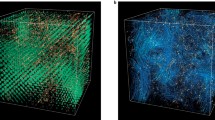“There is a strong trend towards clear- cut, universally valid answers that exclude different approaches. Whenever one way of thinking is developed with great force and success, other ways are unduly neglected. It was aptly expressed by Marcus Fierz, the Swiss physicist-philosopher: ‘The scientific insights of our age shed such glaring light on certain aspects of human experience that they leave the rest in even greater darkness’.”
Victor F. Weisskopf,Bulletin The American Academy of Arts and Sciences, Vol. XXXV, November 1981, No. 2.
Abstract
Progress in laboratory studies of plasmas and in the methods of transferring the results to cosmic conditions, together within situ measurements in the magnetospheres, are now causing a ‘paradigm transition’ in cosmic plasma physics. This involves an introduction ofinhomogeneous models with double layers, filaments, ‘cell walls’, etc.
Independently, it has been discovered that the mass distribution in the universe is highly inhomogeneous; indeed,hierarchical. According to de Vaucouleurs, the escape velocity of cosmic structures is 102–103 times below the Laplace-Schwarzschild limit, leaving avoid region which is identified as a key problem in cosmology.
It is shown that a plasma instability in the dispersed medium of the structures may produce this void and, hence, explain the hierarchical structure. The energy which is necessary may derive either from gravitation or from annihilation caused by a breakdown of cell walls. The latter alternative is discussed in detail. It leads to a ‘Fireworks Model’ of the evolution of the metagalaxy.
It is questioned whether the homogeneous four-dimensional big bang model can survive in an universe which is inhomogeneous and three-dimensional.
Similar content being viewed by others
References
Alfvén, H.: 1981a,Cosmic Plasma, D. Reidel Publ. Co., Dordrecht, Holland.
Alfvén, H.: 1981b,Astrophys. Space Sci. 79, 491.
Charlier, C. V. L.: 1908,Astronomi och Fysik 4, 1.
Charlier, C. V. L.: 1922,Astronomi och Fysik 16, 1.
Charlier, C. V. L.: 1924,Publ. Astron. Soc. Pacific 37, 177.
de Vaucouleurs, G.: 1970,Science 167, 1203.
Fournier-d'Albe, E. E.: 1907,Two New Worlds, Longman and Co., London.
Groth, E. J., Peebles, P. J. E., Seldner, M., and Soneira, R. M.: 1977,Sci. Am. 76, 00.
Mendis, D. A., Houpis, H. L. F., and Hill, J. R.: 1982,J. Geophys. Res. (in press).
Peebles, P. J. E.: 1980,The Large-Scale Structure of the Universe, Princeton University Press, Princeton, N.J.
Rogers, S. and Thompson, W. B.: 1980,Astrophys. Space Sci. 71, 257.
Stecker, F. W., Protheroe, R. J., and Kazanas, D.: 1981, NASA Tech. Memo. 82118, Goddard Space Flight Center, Md., U.S.A.
Author information
Authors and Affiliations
Rights and permissions
About this article
Cite this article
Alfvén, H. On hierarchical cosmology. Astrophys Space Sci 89, 313–324 (1983). https://doi.org/10.1007/BF00655984
Received:
Issue Date:
DOI: https://doi.org/10.1007/BF00655984




